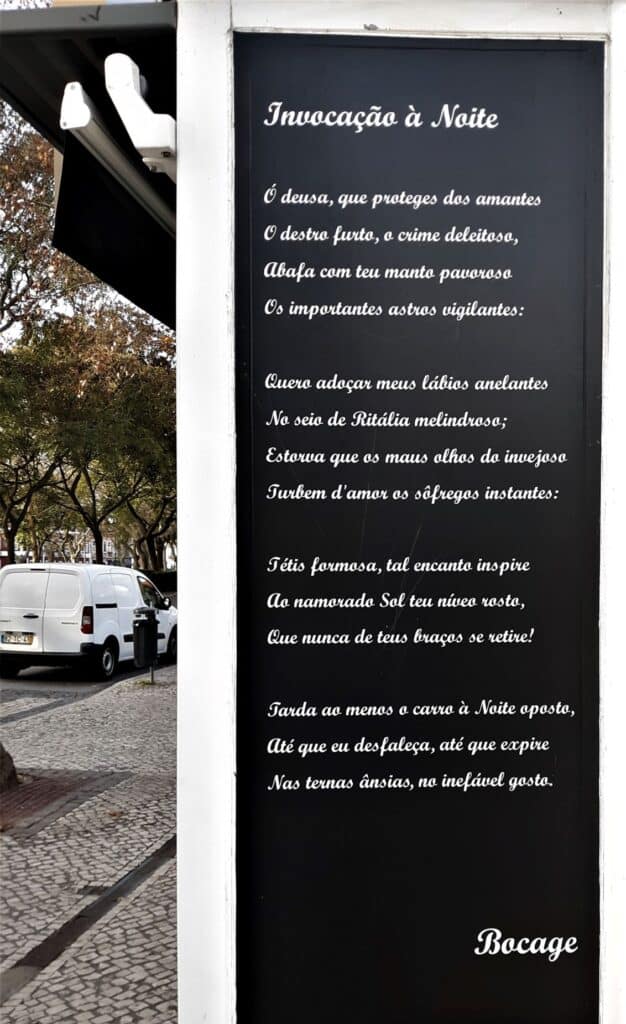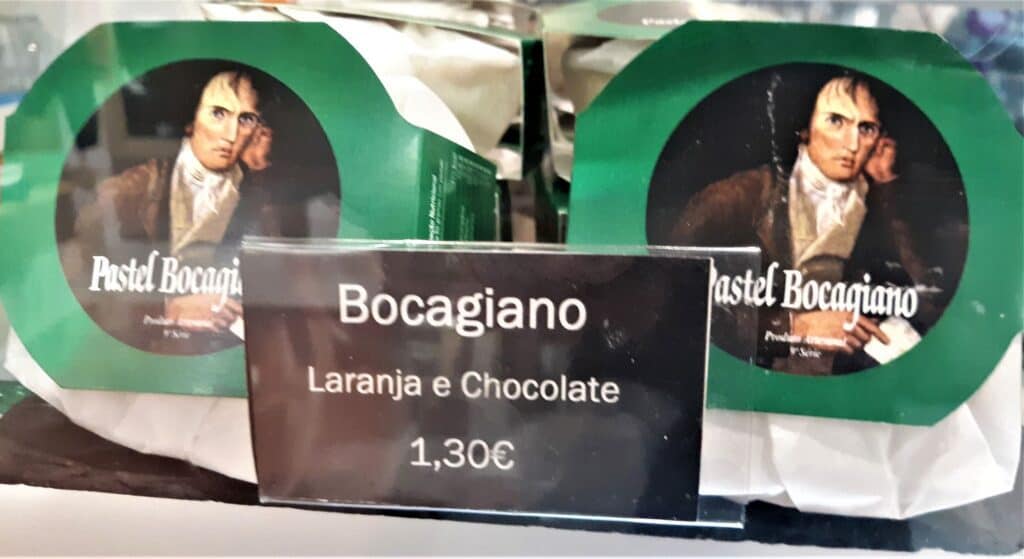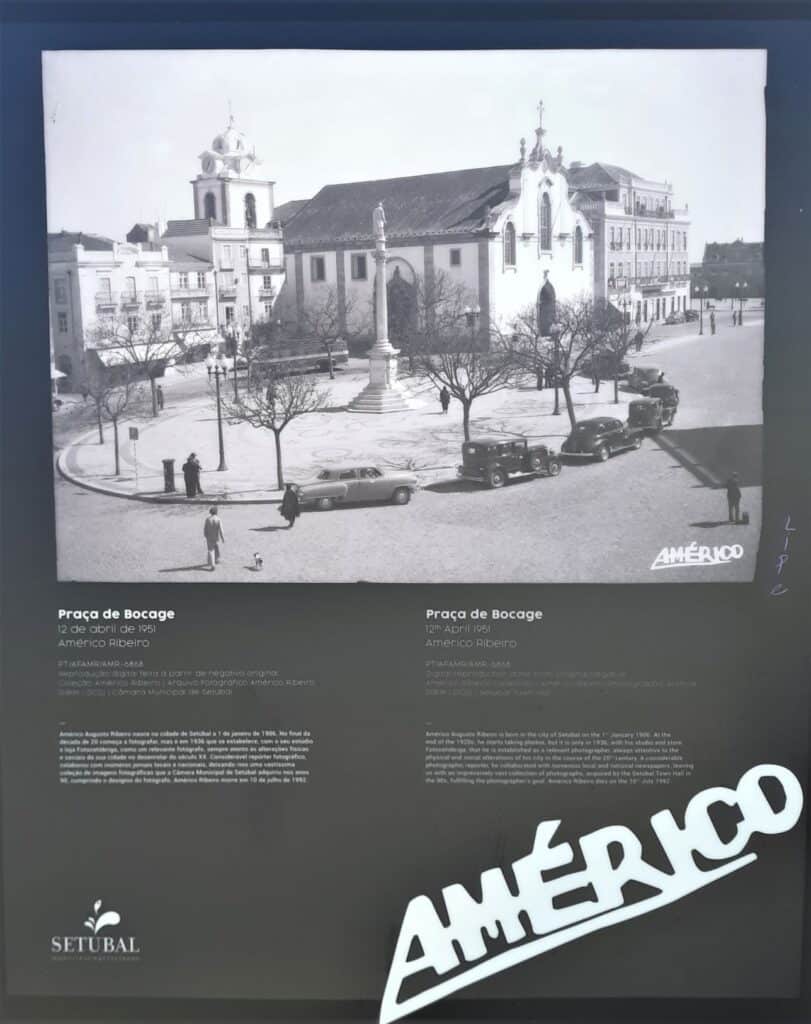Lined by cafes and shops (and the City Hall), Praca de Bocage is the most beautiful square in Setubal.
Praca de Bocage origin story
There’s been a Praca (public square) on this location in Setubal since at least the 15th century when it was known as Praça do Sapal. The nearby 13th century Igreja de São Julião (St. Julian’s Church) was probably the impetus for building the square.
The square’s current pleasing design was laid out in the 18th century, but it wasn’t until 1871 that a publicly funded marble statue of Manuel Maria Barbosa du Bocage was placed in the center of the square. It was then that the space was renamed Praca de Bocage.

Bocage was born in Setubal but didn’t spend much of his life there. He died in poverty at the age of 40 in 1805. His poems were thought to be too scandalous and weren’t available in Portugal for many, many year. Today, however, he is revered, especially in his hometown where many businesses are named after him and bits of his sonnets can be found posted around the city. No where is his reputation more prevalent than in the square that bears his name and the monument which has his words etched in stone.

Visiting the Praca de Bocage
If you’re planning to meet someone at the Praca de Bocage, locals will tell you to meet at the statue; there’s no need to explain which statue, it’s Bocage.

The late style Baroque Igreja de São Julião (Church of St. Julian) adds to the atmosphere of Praca de Bocage. Just in front of it is a nice fountain surrounded by benches. On the other side of the square is City Hall. I’ve never seen a municipal building painted such a vibrant purple color before. Every time I pass by I think Prince must’ve approved.
Circling the square are several cafes and restaurants. For less than a Euro, you can get an espresso at one of the square’s cafes. My favorite is Botequim du Bocage, a bakery that makes their pastry in-house (Fabrico Próprio). Or, have a glass of wine at Moscatel de Setúbal Experience.

The best part of hanging out at one of the cafes on the Praca de Bocage is that the waitstaff won’t rush you out. Order an espresso or a pastry and you can linger for hours if you like. Or, if you feel uncomfortable taking up a seat at a restaurant (some Americans can’t get over the feeling that they’re somehow an annoyance if they don’t keep ordering food and drinks), there’s public benches scattered around the square.
Pro tip: head to the Casa do Turismo on the Praca de Bocage. Upstairs there is a little outdoor seating area where you can get a coffee and sit overlooking the square. It’s rarely crowded. And there’s a great little wine shop downstairs stocked with local vintages.

About the Author

Brent Petersen is the Editor-in-Chief of Destination Eat Drink. He currently resides in Setubal, Portugal. Brent has written the novel “Truffle Hunt” (Eckhartz Press) and the short story collection “That Bird.” He’s also written dozens of foodie travel guides to cities around the world on Destination Eat Drink, including in-depth eating and drinking guides to Lisbon, Porto, Sintra, Monsaraz, and Evora in Portugal. Brent’s podcast, also called Destination Eat Drink, is available on all major podcasting platforms and is distributed by the Radio Misfits Podcast Network.
